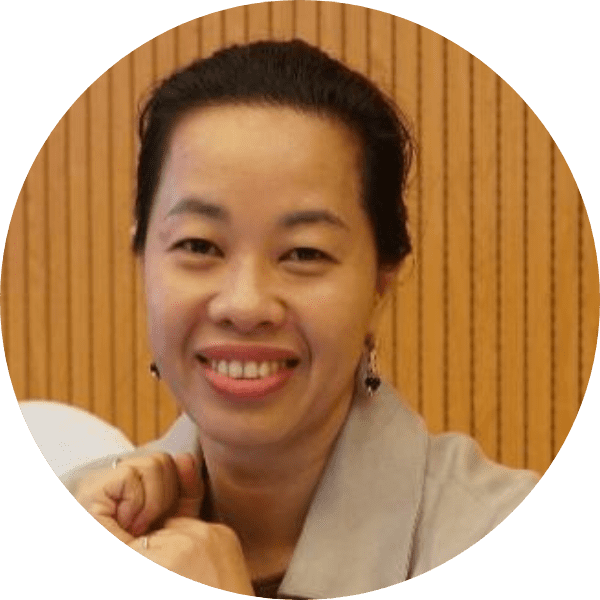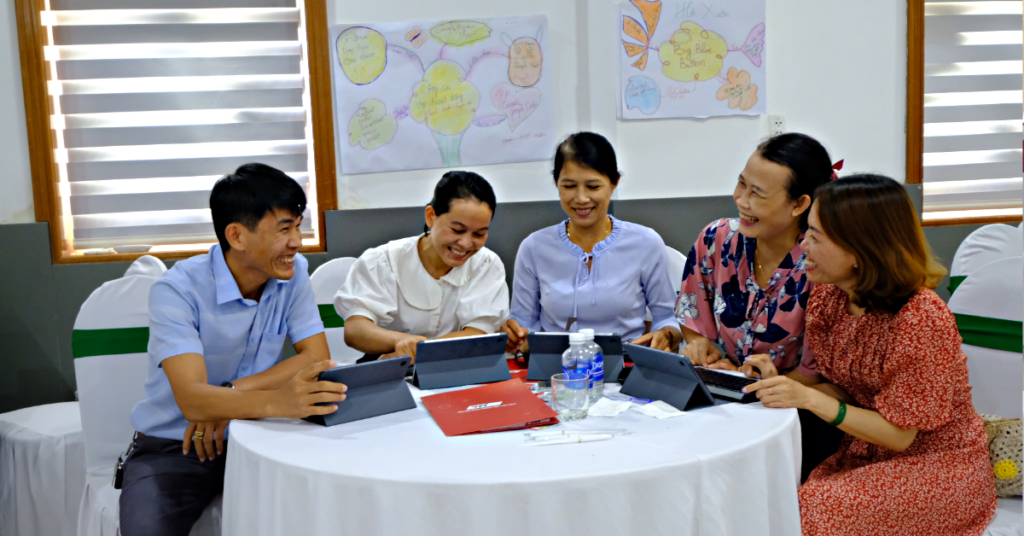5 min read
During the outbreak of Covid, Viet Nam shuttered its schools nationwide, and education was largely accessed through screens. However, not only was education for children and youth moved online but so too was training for teachers. Continuous professional development, which pre-Covid, was largely only available in-person, was moved online. Suddenly, not only were teachers required to adapt their teaching methodologies, but they too had to adapt to learning online.
Now that teaching and learning has resumed in-person again, what lessons can be taken forward? Among teachers, there are questions being raised: How can teachers make use of the online teaching skills they developed now that they’re back in the classroom? And how might online facilitation skills and experiences contribute to or enhance continuous professional development for teachers?
The “blended” term used here refers to “some combination of both face to face and technology-mediated learning/teaching” (Cleverland M. and Wilton D., 2018). We believe that the combination of synchronous and asynchronous/online and face to face components provide the teacher and the learner better agility to adapt to unprecedented situations.
Blended learning supplements more playful activities for students
During school closures, most students became more familiar with electronic devices and developed the basic digital literacy skills needed to use those devices for learning. Many schools in remote areas received free laptops and access to internet by the government and private donors. With their students having increased access to technology, teachers were able to build on their previous teaching methods such as pair work, group work, mind mapping, etc. by adding a technological component that made the activities more engaging and exciting for the students. Online tools such as Kahoot, Padlet, Jamboard, Slido, etc. afforded collaborative activities, quizzes, and play-based learning to spark the interest of their students.
While these kinds of online tools are no longer required as students resume in-person classes, blending both online and offline modalities could offer advantages. Sometimes, it might be useful to switch from looking at the backboard to a TV screen with lively images and animations which spark the students’ curiosity and attract their attention. Using online tools offers students opportunities to practice their IT skills and further develop digital skills for Vietnam’s economic growth and rapid digitalization. According to the World Bank, Viet Nam is lagging behind regional competitors in terms of available digital skills today and failing to catch up could cost the economy up to two million jobs by 2045.
Blended continuous teacher professional development (CPD) provides new opportunities for participation and engagement.
Ensuring teachers have the required digital literacy to deliver quality education is also a key priority. While schools were closed, more than ever, teachers had a strong need to join continuous professional development activities to share and learn from each other on how to keep online learning engaging and interactive for students, which was a new situation to all of them. That’s why “continuous” is seen as the most important factor to the teacher and school manager’s professional development as it helps the teacher and school managers solve issues that continue to emerge.
Online meetings, using tools to facilitate professional teacher meetings (PTM), professional learning community (PLC) or community of practice (CoP) meetings via online platforms such as Google Meet, Zoom, Teams, and Facebook groups, among others, became more commonplace during Covid’s school closures. The experience with online working and using IT tools was considered a boost for the teacher to improve their digital skills to a higher level in a short amount of time. Now, by reflecting on the advantages of online meetings, teachers and school managers are able to apply a blended continuous professional development modality with in-person meetings for small groups while at the same time using Zoom or other meeting-hosting platforms to enable other members to join online. This way, the number of attendants can be maximized while simultaneously giving a flexible mode of participation. This blended approach also allows for online inter-district or inter-province meetings where teachers and school managers can join and share from their location cutting back on travel time and expenses. For participants with disabilities or those with children but no access to childcare, blended continuous professional development can also be more inclusive.
“I found that online tools for meetings in Covid time are still useful now thanks to their flexibility, so all of us can join any meeting from wherever we are. Now we keep the blended mode for in-person meeting and online meeting to make sure all teachers can participate in our PTM, PLC session. We became skillful in using Jamboard, Padlet and other online tools to collect ideas from teachers before the meeting which helps us to develop a more relevant meeting agenda.”
Ms. Pham Thi Hanh – School manager – Cai Dan primary, Song Cau district, Thai Nguyen

Furthermore, blended continuous professional development also provides opportunities beyond the immediate or local context, teachers now have more opportunities to join, share and learn with colleagues from other provinces and even from other countries thanks to online meetings, virtual workshops, and conferences. These opportunities allow teachers and school managers to exchange and expand best practices with stories of change and other experiences.
Better preparation for the future
Who knows what will happen tomorrow? With crises continuing to unfold globally from global health to climate change, we must be prepared for the possibility of more school closures in the future. It requires teachers and students to be resilient as changes unfold such as the ability to shift back into online learning and teaching again. If teachers continue to use blended teaching with online tools in offline classrooms, they will be more confident to continue teaching during crises and students, in turn will be better able to keep learning, reducing the chances of interrupted schooling and learning loss.
In general, blended modalities are useful and effective in normal circumstances and essential to enrich digital skills. Blended teaching and learning not only contributes to more playful teaching and learning but creates a more equitable learning environment for all and prepares the school system for future changes.


















